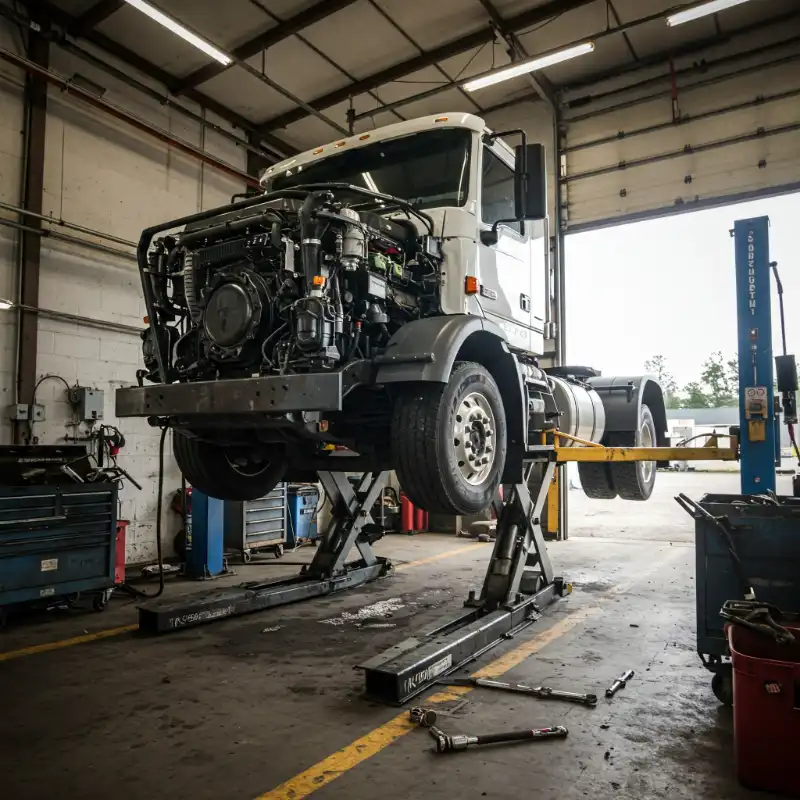Commercial trucking has undergone a profound transformation in recent years, with technological advancements playing a role in enhancing the efficiency and reliability of heavy-duty truck repairs. For truck owners, fleet managers, and commercial trucking professionals, staying up-to-date with the latest innovations is crucial for maintaining operational excellence and minimizing downtime. This blog post will discuss four key areas of technological advancements in heavy-duty truck repairs, examining the impact of diagnostic technologies, predictive maintenance systems, automated repair processes, and the use of advanced materials and 3D printing.
Diagnostic Technologies
In heavy-duty truck repairs, diagnostics are the cornerstone of swift and accurate problem identification. Recent advancements in diagnostic tools and technologies have revolutionized the way issues are detected and addressed.
Onboard Diagnostics (OBD)
Onboard Diagnostics, commonly known as OBD, has evolved significantly, providing real-time insights into the truck's performance. The latest OBD systems go beyond basic fault code readings. They now offer intricate details about engine health, emissions, and overall system functionality. This allows technicians to pinpoint issues with precision, enabling faster and more targeted repairs.
Sensor Technologies
Sensor technologies have become increasingly sophisticated, contributing to the comprehensive monitoring of various truck components. Advanced sensors can detect anomalies in engine temperature, oil pressure, brake performance, and more. By leveraging these sensors, fleet managers gain a proactive approach to maintenance, preventing potential breakdowns before they occur.
Telematics Systems
Telematics systems have emerged as a game-changer in heavy-duty truck diagnostics. These systems integrate GPS technology with diagnostics, providing a holistic view of a truck's performance in real-time. Fleet managers can remotely monitor the health of their entire fleet, track fuel efficiency, and receive instant alerts for potential issues, allowing for prompt intervention and minimizing operational disruptions.
Predictive Maintenance Systems
The advent of predictive maintenance systems has ushered in a new era for the heavy-duty truck industry. By harnessing the power of machine learning and artificial intelligence, these systems predict potential failures and schedule maintenance proactively.
Predictive maintenance leverages historical data, real-time diagnostics, and even external factors such as weather conditions and route specifics. Through predictive algorithms, the system can forecast when a specific component is likely to fail, enabling scheduled maintenance during non-operational hours. This not only minimizes downtime but also reduces overall maintenance costs by addressing issues before they escalate.
The implementation of predictive maintenance is a strategic move for fleet managers, allowing them to transition from a reactive to a proactive maintenance approach. By embracing these technologies, truck owners can optimize their maintenance schedules, extend the lifespan of components, and enhance the overall reliability of their fleet.
Automated Repair Processes
Automation is reshaping heavy-duty truck repair processes, offering a range of benefits from increased efficiency to improved precision. Innovations such as robotic arms and automated machinery are becoming commonplace in repair shops, streamlining traditionally labour-intensive tasks.
Robotic Arms
Robotic arms are now employed for intricate tasks like welding and painting. These robotic systems provide a level of precision that surpasses human capabilities, ensuring consistent and high-quality repairs. Additionally, they contribute to a safer working environment by handling hazardous tasks, thereby reducing the risk of accidents and injuries.
Streamlining Workflow
Automation has a direct impact on the overall workflow in heavy-duty truck repair shops. Tasks that once required significant manual labor and time can now be completed in a fraction of the time. This not only accelerates the repair process but also allows technicians to focus on more complex aspects of the job, improving overall productivity.
Remote Diagnostics and Repair
In addition to on-site automated repair processes, remote diagnostics and repair assistance have become integral. Through the integration of augmented reality (AR) and virtual reality (VR), technicians can receive guidance and support from experts located remotely. This facilitates quicker issue resolution and reduces the need for specialists to be physically present at the repair site.
Advanced Materials and 3D Printing
The materials used in heavy-duty truck repairs have undergone a transformation, with a shift towards high-strength alloys and composite materials. Moreover, the introduction of 3D printing has revolutionized the manufacturing of replacement parts and components.
High-Strength Alloys
High-strength alloys contribute to the durability and longevity of truck components. These alloys offer enhanced mechanical properties, ensuring that critical parts can withstand the rigors of heavy-duty use. The use of advanced alloys results in components that are not only stronger but also lighter, contributing to fuel efficiency.
Composite Materials
Composite materials, combining different substances to create materials with superior characteristics, are gaining traction in heavy-duty truck repairs. These materials offer advantages such as corrosion resistance, reduced weight, and improved fuel efficiency. Components made from composites contribute to the overall durability of the truck while minimizing maintenance requirements.
3D Printing
3D printing has emerged as a disruptive force in the manufacturing of replacement parts. The ability to produce intricate components on demand significantly reduces lead times and costs associated with traditional manufacturing methods. This is especially beneficial for rare or outdated parts that may no longer be readily available in the market.
Conclusion
The latest technological advancements in heavy-duty truck repairs are shaping the future of the commercial trucking industry. From advanced diagnostics and predictive maintenance systems to automated repair processes and the use of cutting-edge materials like high-strength alloys and 3D printing, these innovations offer tangible benefits for truck owners and fleet managers.
By embracing these technologies, the industry can achieve heightened efficiency, reduced downtime, and ultimately, a more sustainable and cost-effective approach to heavy-duty truck maintenance. As the landscape continues to evolve, staying informed and adopting these advancements will be crucial for businesses seeking a competitive edge in the ever-changing world of heavy-duty truck repairs.
For those looking for diesel truck maintenance, please visit our general diesel truck repairs and services page here.










.webp)





























